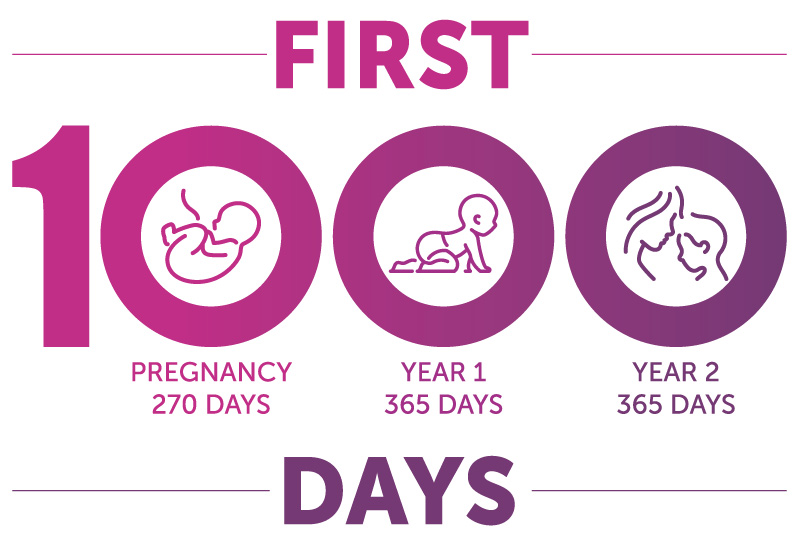Assuring that everyone caring for baby uses safe sleep practices will greatly reduce a baby's risk of SIDS and SUID.

The first 1000 days of life, from conception to 24 months, form a crucial period that shapes a child’s entire life. How well a mother and child are nourished and cared for during this time has a profound impact on physical, emotional, and mental growth and development. This is critical because the first 1000 days are when a child’s brain begins to grow and develop and where the foundations are laid for lifelong health.
The first 1000 days of life are key to lifelong health and well-being.
SD Services to Assist with the First 1000 Days
The State of South Dakota has many programs and services to assist you and your growing family during the first 1000 days.
It Starts With You
Your health and well-being are important. The more conscious a woman is about her overall health, the better the chance of living a healthy life, having a healthy pregnancy and raising a healthy family.
Early Signs of Pregnancy
Knowing the early signs of pregnancy can help a woman determine whether or not she is pregnant earlier and allows for prenatal care to be started sooner.
Prenatal Care
Prenatal care can begin the minute a woman decides she wants to become pregnant, but at a minimum, it should start as soon as a pregnancy is suspected.'
Safe Sleep
Immunizations
Vaccines are one of the best ways to protect your baby against serious diseases, especially between birth and age two.
You and Baby
As you prepare to bring your baby home, there are many new things to consider in order to give your baby the best possible start to a healthy life.
South Dakota Department of Health Celebrates Success of Restructured Community Health Services
South Dakota Department of Health Celebrates Success of Restructured Community Health Services
The South Dakota Department of Health restructured its community health services in September 2023, aiming to reshape how health providers impact lives across the state.
Pregnancy Care Program
Pregnancy Care Program: South Dakota Department of Health's program promoting infant health and supporting parents through education and resources.
Bright Start
The Bright Start program is here with personal nurses to help new moms be the best they can be by helping women from pregnancy and beyond.
Safe Sleep
Safe sleep efforts are rewarded every time a baby wakes up to the world. Lying your baby down on their back, alone, in their crib, bassinet, or play yard is the best way for them to sleep safely.
WIC
South Dakota WIC: Nutritious foods, education, and support for eligible participants, promoting well-being of mothers and children.

